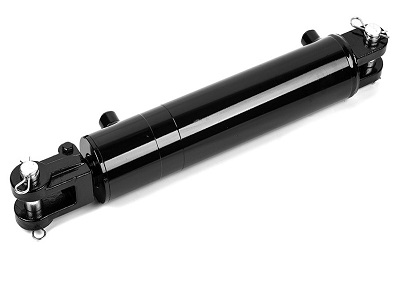In the field of automobile transportation, efficiency and reliability are the core elements. Whether it is transporting new cars to dealerships or providing vehicle transportation services for large events, the related machinery and equipment must demonstrate optimal performance. The key to this series of performances, especially in the lifting devices of car transporters, is the hydraulic cylinder China. These components are not just simple accessories but the pillars of the entire operation process, ensuring that heavy objects can be safely and smoothly handled. In vehicles such as automobile tractors, hydraulic cylinders play a crucial role. As the core component of hydraulic systems, the performance and stability of hydraulic cylinders are directly related to the efficiency and safety of the vehicle. Therefore, we must give high priority to the maintenance and upkeep of hydraulic cylinders.
Understanding hydraulic cylinders is the first step. Before adjusting the car hauler hydraulic cylinders, we must be familiar with their working principles and structure. Hydraulic cylinders are known for their simple structure and reliable operation. When performing reciprocating motion, they can eliminate the need for a reduction device and have no transmission gaps, ensuring smooth movement. Therefore, they are widely used in the hydraulic systems of various machinery. Hydraulic cylinders are mainly composed of a cylinder barrel and cylinder cap, piston and piston rod, sealing devices, buffering devices, and exhaust devices. The buffering and exhaust devices are determined according to specific application scenarios, while the other devices are essential.
There are several key points to note in the maintenance of hydraulic cylinders. The first is the replacement of oil. We need to check the quality and level of the hydraulic oil, ensuring that it is clean, free of impurities and moisture, and within the standard range of the cylinder. If the quality of the hydraulic oil is poor or the oil level is abnormal, it should be replaced or adjusted in a timely manner. Over time, foreign substances can inevitably enter the hydraulic cylinder, increasing friction. Additionally, hydraulic oil has a certain lifespan, and not replacing it for a long time may damage or corrode the internal parts of the hydraulic cylinder.
The second is to check the sealing performance. Seals are important components that ensure the normal operation of hydraulic cylinders. In harsh environments, metal components and rubber seals may be adversely affected. If the seals are damaged or aged, it can lead to hydraulic oil leaks, affecting the lifting and retraction functions of the hydraulic cylinder. Therefore, hydraulic cylinders used in harsh environments should have appropriate anti-rust functions, and different anti-rust measures should be selected based on the degree of environmental impact. It is also necessary to regularly check the condition of the seals and promptly replace any problematic seals.
Anti-corrosion work is equally important. Besides paying attention to the cylinder barrel of the hydraulic cylinder, the anti-corrosion of the piston rod should not be ignored. The piston is the load-bearing part of the hydraulic cylinder and often extends outside the cylinder in working conditions, making it susceptible to corrosion from oxides, acidic gases, and other substances. Therefore, maintenance personnel need to regularly apply an appropriate amount of grease to the piston rod for protection, preventing it from breaking during operation.
Additionally, during routine inspections and maintenance, it is necessary to exhaust the air from the cylinder when all components of the hydraulic cylinder are normal and there are no oil leaks. If not promptly purified, the air may mix with the hydraulic oil, causing unstable piston movement. Therefore, pre-emptively exhausting the air from the hydraulic cylinder is a necessary step.
Adjusting the working pressure and stroke of the hydraulic cylinder is also an important aspect of maintenance. The working pressure should meet the design requirements of the car hauler hydraulic cylinders; if it is too high or too low, it will affect its normal operation. The stroke of the hydraulic cylinder refers to the range of movement of the piston, and excessively large or insufficient strokes will impact its lifting and retraction functions. These two parameters need to be adjusted according to specific situations, ensuring that the adjustments are made while the crane is unloaded to avoid damaging the hydraulic cylinder.
In summary, correct maintenance and upkeep not only extend the service life of car hauler hydraulic cylinders but also ensure the stable and safe operation of vehicles. We must emphasize the maintenance of hydraulic cylinders and put it into practice. Only in this way can we ensure that the vehicle maintains a good working condition at all times, providing reliable safeguards for our work and life.


